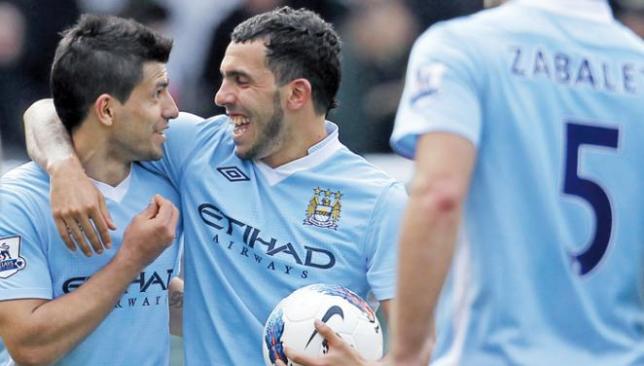
For all Sir Alex Ferguson’s astonishing achievements as manager one perhaps overlooked talent has been his ability to tactically adapt over the 26 years he has been at Manchester United. Each new United team has been defined by a different approach.
The rigid, defence-based philosophy of the 1994 and 1995 league winning teams, a side Ferguson said he’d “go to war with”, was based on the stoicisim of Steve Bruce and Gary Pallister and the counter-attacking prowess of Andrei Kanchelskis, Ryan Giggs, Mark Hughes and Eric Cantona.
As the academy at Carrington continued to bear fruit with David Beckham, Paul Scholes, Gary and Phil Neville, plus the acquisitions of Dwight Yorke and Andy Cole around the mid-90s, there was a change in approach.
Still strong at the back, United were incredibly fluid going forward. The inter-play of Cole and Yorke supplemented by Beckham, Giggs and Scholes’ creativity. That landed the Champions League in 1999 but Ferguson was still restless.
In came Juan Sebastian Veron and Ruud van Nistelrooy as United became a more continental-like side with Scholes pushed further forward, playing off van Nistelrooy. But the Red Devils failed to properly embrace their new identity, winning just two Premier League titles between 2001 and 2006. The situation wasn’t helped by Veron’s inability to settle and then the disastrous arrivals of Eric Djemba-Djemba and Kleberson.
It was not until Wayne Rooney and Cristiano Ronaldo, bought for a combined £37million, when this model fully came to fruition; United, almost in a 4-3-3, Nemanja Vidic and Rio Ferdinand among the two best centre-backs in the world with two of the planet’s finest forwards ahead of them.
With the Glazers purchase of the club came a need for prudence and as that team peaked around 2008 there were further changes; Ronaldo and Carlos Tevez left in 2009 and age caught up with Giggs and Scholes.
Now United have almost had to come full circle with a return to a strict and rigid 4-4-2/4-4-1-1, this depending on how he wants to utilise Rooney. The striker’s play is maybe not as extravagant as it once was but his position in a withdrawn role offers energy for the team.
The problem is the 33-year-old Rio Ferdinand, Jonny Evans or Phil Jones are not Bruce and Pallister, Danny Welbeck is not Hughes and for all his ability Nani is nowhere near as consistent as Giggs in his pomp.
Ferguson last week claimed Evans is the best centre-back in the Premier League and certainly he has been impressive since January. However in the 4-4 draw against Everton he was culpable for at least three of the four goals, highlighting his fragility.
This is the danger zone for United and where City, with Carlos Tevez and Sergio Aguero, can significantly damage United. Between them they have 26 Premier League goals, 16 of which have been scored at the Etihad. The fact their movement is as much a part of their game as their finishing spells trouble for United’s likely back two.
Tevez will likely start further forward for City with Aguero operating almost as a touch player just outside the penalty area. Equally, Tevez could play deep, allowing Aguero to go beyond. For Ferdinand and Evans this is a nightmare. Which player to mark and which to allow the midfield to try and disrupt?
If Ferdinand, for example, gets drawn away from Evans following Aguero, this is where Evans can appear crudely exposed. If Evans follows either of City’s strikers, a possibility given his questionable positioning at times, then his lack of pace may be caught by Tevez on the turn or Aguero’s strength.
Evans does provide United with good distribution from the back but given City’s ferocity on home soil, and Tevez’s rapid pressing of the defence, he is unlikely to be given too much time on the ball.
It is testament to Ferguson’s skill and adaptability that he has got this United team, arguably his weakest since that first title triumph in 1994, to within touching distance of the title.
Surely, the master will have a plan for Tevez and Aguero, but does he have the personnel to execute it?
Sport360° Verdict
So much on the line for both teams but, ultimately, United can afford a draw while it’s win or bust for City.
Much has been made of United’s experience with Ryan Giggs, Paul Scholes, Rio Ferdinand, Patrice Evra and Wayne Rooney all well-schooled in these sorts of occasions.
But even though they may not have done it for City, David Silva has played in the Euro 2008 final, Sergio Aguero the Europa League final and several Madrid derbies, Yaya Toure the Champions League final and many El Clasicos while Carlos Tevez was a former Manchester United player.
So when you compare the two sets of ‘experienced’ individuals, City have the younger and fresher group.
With that in mind, and the game being at the Etihad – a fortress for City – we’re going for a 2-1 home win.
* For breaking news, follow us on @Sport_360 or find us on Facebook